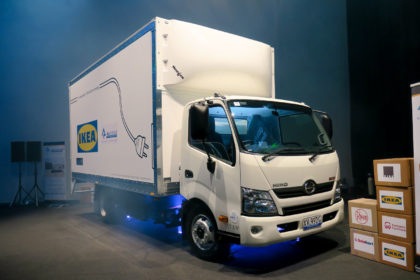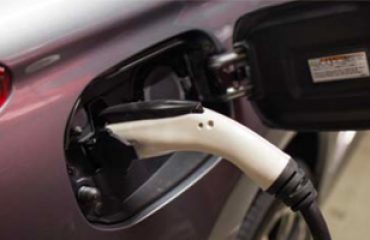
There has been plenty of hype in the media about the potential of electric trucks, but Diesel News went to see and drive a practical electric truck. It may not have all of the high-end super-high-tech of the the highly publicised trucks like Tesla or Nikola, but it does have some runs on the board.
The subject of electric trucks gets a lot of column inches in magazines and countless speculative stories on truck-related websites around the world. On reading the kind of stories being told, you might believe that the electric trucking nirvana is just around the corner, it isn’t.
This is new, complex and fast-developing technology, but there is a long way to go before it is the solution to all of our woes. The concept is a good one and powering a truck from an electricity grid using renewable energy does mean the drastic lowering of carbon emissions. The issues facing developers now is not a proof of concept one, but one of getting a concept up and running in a fleet and making money for its operator, having drivers drive a practical electric truck.
According SEA Electric, we are not there yet, but the company claims there is a clear road to a truck which will fulfil the brief of the future. SEA was a start-up company that came on the scene a few years ago and got a practical vehicle out there on the road and running. It is now in a phase of just getting the number of trucks it has built up and get those out onto the road and working.
There are a few operators buying electric vehicles, but in the main there are other factors at play in the purchasing decision. The truck in the All Purpose Transport fleet was chosen as a result of its client, Ikea, declaring an aim to go to zero emission deliveries. There is no government help at all for zero emission operators.
This does mean the take-up for electric trucks has been limited and the whole concept is quite slow in taking off. This doesn’t seem to deter Joe Di Santo, SEA Electric Sales Director ANZ, who works out of the SEA Electric headquarters in Dandenong in Victoria.

“What I have found is that, if you can get it right here, it’s very scalable,” says Joe. “It is so different here, more complex and more detailed. So, if you can get it working here, it is usually a good sign that it will work in the US and markets like that.
“Australia is a very different market for us. We are the only region that has a manufacturing plant, elsewhere in the world is more about licensing our technology. In the US we have licensing partners assembling the vehicles. We are working with Ford and had our first big order of 100 units.
“In our Australian operation, we are working towards our facility in the Latrobe Valley. That assembly plant transition is happening very smoothly, but it still not going to be available for another two years. In the meantime, we have our assemble facility in Dandenong, hopefully, that will be enough and become really efficient, but if there is more demand we may have go to a transitional facility until the Latrobe one opens.”
According to SEA, the plant in the Latrobe Valley will be a fully functioning assembly facility capable of producing 2,500 per year. At the same time there are a number of research projects in which SEA is working with truck, bus and van manufacturers.
There have already been trucks built using Isuzu, Hino and Iveco trucks, with the original power plant being replaced by an electric drive. These are under evaluation, either by the manufacturers themselves or with some of their customers.
These relationships look set to become more developed as the number of vehicles involved increase. This should see the current practice of removing the driveline before replacing it, being superseded by trucks being supplied from the assembly line as gliders, without the engines included. READ MORE
Diesel News, 16th April 2020




